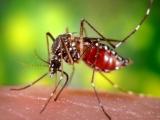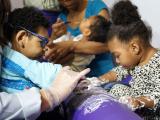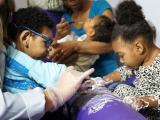Zika infections in Puerto Rico skew toward women, a pattern seen in other affected countries such as Brazil and El Salvador, and sexual transmission might partly explain the increased incidence, researchers reported today.
Basing their findings on Puerto Rico's database of lab-confirmed Zika cases, the world's largest, a team from the US Centers for Disease Control and Prevention (CDC) and partners in Puerto Rico reported their findings today in Morbidity and Mortality Weekly Report (MMWR).
In other developments, the CDC today reported one more baby born with Zika virus, and the WHO added two more locations to its list of countries and territories reporting local virus spread.
Sexual spread a possible cause
Puerto Rico piled up 28,219 lab-confirmed Zika infections in nonpregnant people between Nov 1, 2015, and Oct 20, 2016. When researchers analyzed the cases by sex and age, they found that women ages 20 to 49 had the highest incidence, which matches the pattern seen in earlier reports from Brazil and El Salvador.
Also, in people with suspected infections who were tested for Zika, women ages 40 to 79 years were more likely to test positive than men in the same age-group.
The tilt toward younger women is unique among mosquito-borne diseases that have circulated in Puerto Rico, including dengue and chikungunya, which were equally distributed between women and men, the team noted.
Brazilian experts have wondered if Zika's skew towards women could relate to more exposure to Aedes mosquitoes in the home, more severe symptoms in different age-groups, differences in health-seeking behaviors, a bias toward healthcare workers, or sexual transmission.
The CDC team said data from Rio de Janeiro suggest the gender difference in infection rates could be explained by male-to-female sexual transmission, which also might be responsible for the trend they see in Puerto Rico.
"The relative contribution of sexual transmission of Zika virus to rates of Zika virus disease is only beginning to be explored, including relative risk of developing disease in men and women, and through sexual transmission versus mosquito-borne transmission," the team wrote. They added that seroprevalence studies are needed to better gauge the rate of Zika infection in all groups and that the CDC and Puerto Rico Department of Health are currently conducting those investigations in people living near confirmed Zika case-patients.
CDC: One more US baby born with Zika
In its weekly update on various Zika case totals today, the CDC reported one more baby born with Zika virus in the United States, raising the total to 26. The number of pregnancy losses related to the virus remained at 5.
Also, the CDC said 52 more Zika infections in pregnant US travelers have been reported, boosting that number to 1,057. In US territories, health officials added 94 more, pushing the number of pregnant women infected in those regions to 2,357.
The number of Zika illnesses in US travelers grew by 47 to 4,035, while the number of infections in US territories vaulted to 31,093, an increase of 1,019, the CDC said.
No new sexual transmission or Guillain-Barre syndrome (GBS) cases were reported by US states, though the territories reported one more GBS case, making that total 46.
New Florida cases, WHO update
- The Florida Department of Health (Florida Health) today reported five more locally acquired Zika cases, raising the total to 222. One is linked to the Miami Beach investigation, and the others involve Miami-Dade County residents for whom the exposure locations are still under investigation.
- The World Health Organization (WHO) said today in its weekly Zika report that Montserrat and Palau are the only two locations reporting their first local Zika cases over the past week. It also said that its Zika emergency committee will meet on Nov 18 for the fifth time. The group last met Sep 1 and concluded that the Zika outbreak still constitutes a public health emergency of international concern.
See also:
Nov 10 MMWR report
Nov 10 CDC updates





















